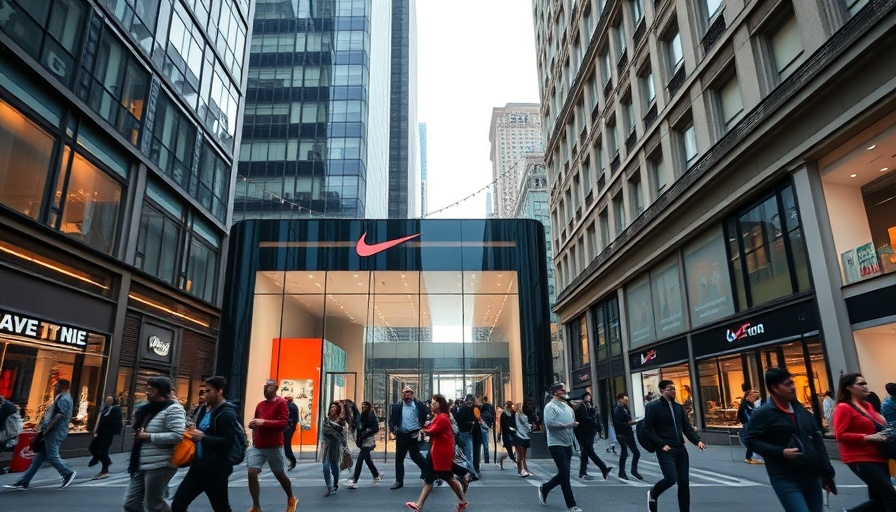
Nike's Strategic Shift in Manufacturing
As global trade dynamics continue to evolve, Nike's recent announcement to reduce its production in China signals a strategic pivot aimed at cushioning the blow from escalating U.S. tariffs. On June 26, the sportswear giant reported a forecasted revenue drop that was smaller than analysts predicted, with shares climbing 11% in after-hours trading for being proactive in its approach.
Understanding the Impact of Tariffs
U.S. tariffs under the Trump administration have disproportionately hit consumer goods, compelling companies like Nike to reassess their production strategies. Executives indicated that tariffs could potentially increase costs by around $1 billion, emphasizing the need to mitigate risk. By cutting reliance on China - which currently fulfills about 16% of Nike's U.S. imports - the company aims to reposition itself within a "high single-digit percentage range" by May 2026, exploring manufacturing alternatives in various countries.
Why This Matters to Investors
For investors, understanding Nike's shift is crucial as it reflects broader trends in global supply chains and trading relationships. Tariff-induced cost pressures can lead to skepticism among stakeholders; however, Nike’s strategic repositioning could also convey a message of resilience and adaptability. This situation underscores the importance of considering macroeconomic factors when developing investment strategies in a volatile market.
Why Consumer Goods Are Always at Risk
Consumer goods companies like Nike operate within a delicate balance between profitability and adaptability, especially in the face of rising tariffs. Reports suggest that companies with significant exposure to China are increasingly vulnerable. Nike's decision to diversify its production footprint may set a precedent for other market players, illustrating how reactive strategies can shield against unforeseen regulatory shifts.
Recommendations for Investors
As Nike navigates these changes, investors should consider diversifying their portfolios to cushion against stock market volatility. Employing strategies such as allocating funds across international markets can be beneficial. Additionally, keeping an eye on companies in healthcare or technology sectors, which are generally less affected by tariffs, may provide more stable growth opportunities.
The Bigger Picture: Future Predictions
Looking ahead, experts predict that the ongoing trade tensions could lead to increased production costs and further market reactions. For investors, this necessitates a focus on risk management strategies, including portfolio diversification and long-term investing horizon. Understanding the socio-economic climate, and investing in sectors likely to flourish in a changing regulatory landscape can lead to more informed and strategic investment decisions.
Conclusion: Be Proactive in Investing
Nike's proactive approach offers a lesson to investors about the importance of adaptability in the face of external pressures. By staying informed and adjusting your investment strategies to account for market volatility and geopolitical uncertainties, you can better safeguard your financial future.
 Add Row
Add Row  Add
Add 



Write A Comment